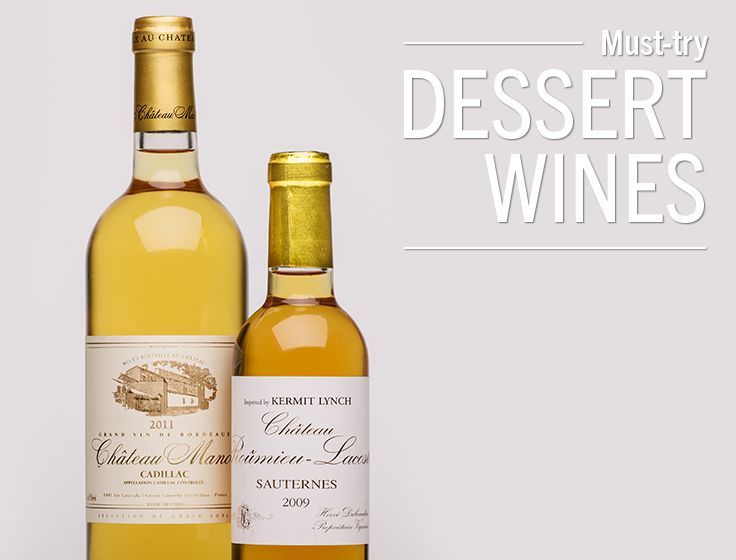The best dessert wines
The definition of dessert wine is almost as complex as the wines themselves. There are different interpretations of the style depending on the source. Generally speaking, dessert wines are typically high in sugar content as well as alcohol. The wines that fall into this category are some of the most complex and luxurious styles of wine produced worldwide.
In our cold weather climate, the Icewine or Eiswein is probably one of the best known styles. This wine is crafted by letting the ripened grapes freeze on the grapevine. What happens next is Mother Nature at her finest. As the grape freezes, the natural sugars within are concentrated and intensified. The sugars and solids remain, but a large amount of water is removed, resulting in a very sweet wine with balanced acidity. Because a large quantity of juice is lost in the processing of the grapes, Icewines are typically more expensive than a traditional wine. Icewine will have notes of ripe peaches, apricots, pineapple and citrus fruits. They pair extremely well with fruit tarts, crème brûlée or even plain shortbread cookies. These wines are best when served chilled.
When most people think of French wines, full bodied, highly structured, dry reds come to mind. While true, one of the most expensive, opulent, sophisticated styles of dessert wines comes from the Bordeaux region of France. The region has two unique small regions within itself, Sauternes and Barsac.
Dessert wines from this region are a by-product of a natural fungus called “botrytis” or “the noble rot.” What may have started out in a vineyard as a failure of catastrophic proportions, instead led to a discovery that has endured since the mid-1600s.
Here is the condensed version of how this process takes place. As the botrytis fungus attacks the ripening grapes, it is looking for a water source to consume. When this happens, what remains is a more concentrated juice with a higher sugar content and smooth acidity. The downside of this process is that it is very unpredictable and requires a vigilant and often sleepless vineyard manager to oversee its progress.
When a Sauternes or Barsac is produced, it is barreled for a period of two to three years. When the wine is young, its sweet, honeyed, apricot profile is almost too much to resist. They are delicious! If, however, you can be patient, after a period of five years or so, you will be rewarded with a wine that is much less sweet on the initial taste and flavors that are totally integrated. The most famous wine of this region is Chateau d’Yquem (pronounced E-kem). It is a rich and wonderfully balanced dessert wine. If you have an opportunity to taste one of these, I promise it will be a memorable experience!






